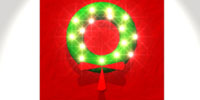|
|||
|
[ anders ] [ resume ] [ choppers ] [ projects ] [ netatalk ] [ route66 ] [ javascript ] [ webgallery ] [ mockMarket ] [ merits ] [ dailyBulletin ] [ panacea ] [ words ] [ pictures ] [ movies ] [ contact ] |
I have never been a fan of images that you instantly know are computer
generated. When you watch a movie and see something that looks and moves
suspiciously like a computer has drawn them into the scene, I find myself
distracted. Not only does it detract from the story, but I find myself
preoccupied by the thought process of how the makers of the movie went about
creating such a sequence, and how I would have done it differently had I
been in charge. None of this is the intended effect of a movie. Special
effects should be unobtrusive to the viewer. The story is the most important
thing. Whatever makes you think of anything but the story detracts from the
experience. Directors have to become ever more technically accurate as the
general audience becomes more and more savvy. With this in mind, I have been thinking of how I could create a rendering on a computer that would be nearly impossible to distinguish from the real thing. It seems to me that for the average rendering system out there, the obvious answer is space sequences. Space ships are fairly easy to model, paint and render. Their movements are absolutely smooth and the backdrop of stars and planets are about as simple as you could possibly get. I have spent hundreds of hours rendering space sequences showing ships flying around against a backdrop of millions of stars and a slice of the earth complete with 3D clouds. Every animator has done the Universal logo with the sun setting behind the earth in space and the letters orbiting around. (others of us have become quite clever creating parodies of it!) What I wanted was a real challenge. I settled on the next best thing from space ships and that was submarines! Here we have large mysterious vessels looming through obscure underwater caverns. All of it well within the bounds of feasibility for my meager rendering talents. Suddenly I had a need to play with volumetric lighting! But after some time with this, I decided to take my subject matter back to the drawing boards. I found that not only could I play to the strengths of a rendering system by creating realistic pictures, but I could play to the strengths of the system by stylizing things. I had just seen Pixar's Knick-Knack animation and decided that I didn't have to fight the monster of realistic rendering, but I could just give up and go for a style. A piece that George Winston had done on an album called December caught my ear. I came up with a frame or two from an imaginary village while listening to his rendition of "The Carol of the Bells". I happened to be working at a place that had a color printer, so I got some test renders together and printed them out. After thinking it over for a while, I embarked on what turned out to be a 4 year rendering project. I continued in the theme "play to the strengths of the tool" and I made things very simple. I tried to concentrate on the composition of the picture and how it worked with the music rather than the details of creating something photo realistic. In the end I found that I had struck on something. Use the best tool for the job and concentrate on what you do well. What followed was a 4000-frame animation that took thousands of hours of CPU time to render. While the whole project as envisioned from the beginning is not quite finished, I am happy with what I was able to accomplish in the 4 years I spent on this project. I used Lightwave for the Amiga (Video Toaster) and Lightwave for Windows to model and render the sequences. The resulting frames were assembled with Adobe Premire on Windows and saved as an uncompressed AVI file. The MPEG compression was done under Windows with Panasonic's MPEG1 encoder.  bells ( 21.1 Mb mpg ) |
||
|
|
|||